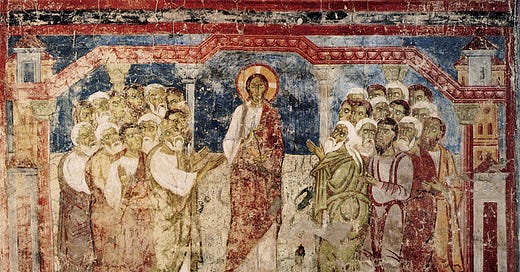Continuatum a parte quinta.
In the last entry, I detailed the variety of senses in which Jesus was understood by Christians functioning simultaneously in Jewish and Greco-Roman contexts as Savior, eventuating in the Christian equation of salvation ultimately with deification, or participation in the divine life, as Christianity assumed the form of a Grec…
Keep reading with a 7-day free trial
Subscribe to A Perennial Digression to keep reading this post and get 7 days of free access to the full post archives.




